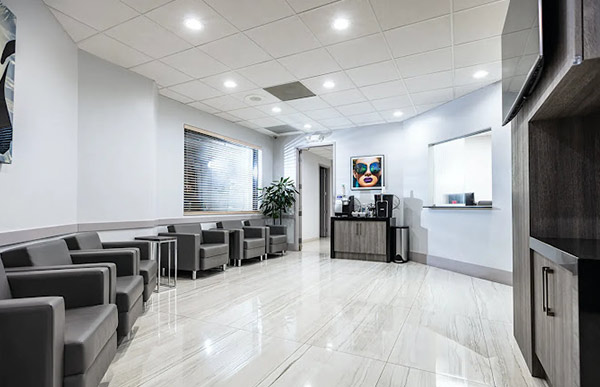Jump to this Section

What are Puffy Nipples?
Puffy nipples may be described as an areola (the pigmented skin surrounding the actual nipple) which is elevated, like a round dome or tent, above the surrounding chest skin. When a snug T-shirt is worn, this condition may be extremely embarrassing. Young men are frequently teased about it and some bullies will actually grab the puffy nipples and twist them, causing considerable pain and occasional bruising.
Boys will often hide their condition by wearing several layers of shirts or hunching over. They will avoid many activities (swimming, skins vs shirts basketball, etc.) which require them to be topless. The good news is that puffy nipples can be permanently cured – but it does require surgery.
Puffy nipples very rarely exist alone. Usually, they are found in combination with some amount of excess tissue, consisting of a combination of fat and breast tissue (ie gynecomastia), of the entire chest. Surgery for gynecomastia will always include treatment of the puffy nipples too.
What Causes a Puffy Nipple?
The cause of a puffy nipple is solid breast tissue that is concentrated beneath it and pushes the tissues upward. Fat alone simply cannot cause a puffy nipple. Some patients try to feel for lumps to determine how much, if any, breast tissue is present. This is misleading because breast tissue itself may feel soft, and sometimes fat may feel firm. The best means to self-diagnose the condition is to lie on a flat surface and look down at your chest. If the areolas protrude above the level of the surrounding chest skin, then you have puffy nipples.
Sometimes the nipple may appear normal and not puffy. This is due to the temporary tightening of tiny muscle fibers within the areolar skin itself. When these fibers tighten, the areola temporarily diminishes in diameter and pushes the tissues deeper into the breast, thereby producing a flatter appearance. What causes this? Anything that stimulates the nipples such as touch, emotional or erotic stimulation, or exposure to a cold environment. Unfortunately, these changes are temporary and when those small muscle fibers relax, the puffiness returns.


Other Nipple Conditions


Protruding Nipples
Sometimes there has been insufficient removal of breast tissue beneath the nipple and it remains to protrude after the initial surgery. This can occur if only liposuction has been performed or if excision was performed but insufficient tissue removed. Revision gynecomastia surgery for this situation will consist of removal of the residual excess tissues so that the nipple will lie smooth and flush with the surrounding skin. It is important, though, for enough tissue under the nipple to be retained to prevent a crater deformity.
Inverted Nipples
Inversion of a previously normal nipple can occur after gynecomastia surgery. This tethering of the nipple to underlying structures is due to scar adherence. Revision surgery to correct this problem will require surgical release of the tether and then placement of some form of fat tissue (graft or flap) between the nipple and the underlying tissue to serve as a “spacer” so that the problem does not recur.
Nipple Lump Treatment
Some patients consult for gynecomastia revision surgery because they can “feel” something under their nipples even though their chest contours are excellent. One must understand that this surgery is basically directed to providing excellent chest contours – ie, a visual result. In 100% of cases, there will absolutely be residual scar tissue under the skin and nipples – that is the normal way in which the body heals – and that tissue may feel firm. There is nothing to be gained by trying to reduce these scar tissues with cortisone – it may induce an unwanted crater deformity. After all, this is not surgery performed so that one can invite another to feel one’s nipple to see if there is anything there.
How Are Puffy Nipples Treated?
Surgical removal of the excess breast tissue beneath the areola is the only permanent treatment. There are no other treatments that work – not Botox, creams, massage, injections, hormones, etc. Surgery to treat puffy nipples is tricky. If too much breast tissue is removed, it can create a crater deformity (where the areolas cave inwards).
If too little breast tissue is removed, the puffiness will remain after surgery. Just as important, it is imperative that the skin surrounding the areolas be undermined and loosened so that the entire skin/areolar area will re-distribute itself. If this is not done, the puffiness will recur even if breast tissue has been adequately removed because the skin has nowhere to go and just bunches up again.


Puffy Nipple Before and After Gallery
View our photo gallery full of patient before & after photos.
Ideal Candidates for Puffy Nipples Gynecomastia Surgery
A thorough consultation is needed in order to confirm whether you are a suitable candidate for gynecomastia surgery. The criteria include:

General good health

No medication or medical conditions that may impede surgery or recovery

A healthy lifestyle

Realistic expectations
What to Expect from Recovery
Dr. Jacobs provides his patients with a specific set of instructions to follow during the recovery period. Careful adherence to these instructions will help ensure a positive outcome after the surgery.


Benefits of Nipple Reduction Surgery
- Immediate and permanent flattening of the areolas after surgery
- Areolas lie flat and flush with the surrounding chest skin
- Clothes fit better
- Improved confidence and self-esteem
Risks of Puffy Nipple Surgery
All surgical procedures present the possibility of risks and side effects. The risks are minimized when puffy nipple surgery is performed by a surgeon specializing in gynecomastia surgery. Possible risks and side effects include soreness, infection, and asymmetry.


Why Choose Dr. Jacobs for Puffy Nipple Reduction?
Dr. Elliot Jacobs is an award-winning, advanced trained aesthetic plastic surgeon with a specialization in male gynecomastia surgery. His puffy nipple surgery delivers consistently pleasing results. Contact his office and book your consultation to learn more about how he can help you.
Contact UsContact Us
Reach out to Dr. Jacobs today to schedule your consultation!
FAQ

Are puffy nipples considered gynecomastia?
Yes. By definition, any excess tissue on a male chest, whether a small amount of breast tissue concentrated under the areola on a slender man or unmistakable large breasts on a man, should be termed gynecomastia. It is simply a matter of degree. In fact, most cases of puffy nipples occur in males who have additional excess tissues on their chest.
What are enlarged nipples and areolas?
One must differentiate between an enlarged or protuberant nipple stalk (located in the center of the areola). This condition is technically termed “hypertrophic nipples”. Treatment for this condition consists of decreasing the height of the nipple stalk with tiny incisions and fine dissolving sutures on the outside of the nipple. On occasion, puffy nipples and hypertrophic nipples can occur together – and surgery can simultaneously cure both problems.
Oftentimes gynecomastia is accompanied by large, wide areolas, in which case there is just enlargement of the areola itself with no hypertrophic nipples or puffy nipples. The normal male areola diameter is between 2.5 and 3.5 centimeters (roughly 1 – 1.5 inches). In some individuals, the areolar diameter may be 50 centimeters (2 inches) or more. Some patients request a direct reduction of the areolar diameter.
This is discouraged because many times the areolar diameter will spontaneously diminish – occasionally dramatically so – when appropriate removal of the underlying gynecomastia tissues is performed.
Any attempt to reduce the areolar diameter alone is doomed to a poor result. We generally recommend the performance of gynecomastia surgery first and then observation for a minimum of six months. If there is still objectionable width to the areola, then an areola reduction may be considered – but it must be realized that there will be a resultant permanent scar completely around the edge of the areola. And sometimes, these scars can widen and even stretch out the areola once again due to the pull of the surrounding tissues.
Why should I consult with a gynecomastia specialist for this surgery?
Most plastic surgeons see only a few cases of gynecomastia per year – not the hundreds per year that are seen by a plastic surgeon who has demonstrated sufficient interest, experience, and expertise in this surgery. This surgery is not routine – it is tricky and every case brings its own challenges – no two cases are the same.
Further, surgery for puffy nipples is exceedingly challenging, for oftentimes the excess breast tissue removal will create a depression under the areola. The surgeon must then fill in the divot with fat flaps from surrounding areas – a delicate balancing act of replacing the breast tissue with fat to support the areolas yet not making the areolas protrude and thereby re-creating the original problem.
Is there an appropriate age for this surgery?
For the younger patient, surgery should not be performed unless the gynecomastia has been present and stable for at least two years. On the other hand, there is no need to defer surgery until the “magical” age of 18, when according to some ill-informed doctors, the gynecomastia will disappear overnight. Why make a young teen suffer through years of bullying in the vain hope that it will spontaneously disappear? When properly performed surgery can result in a permanent cure.






